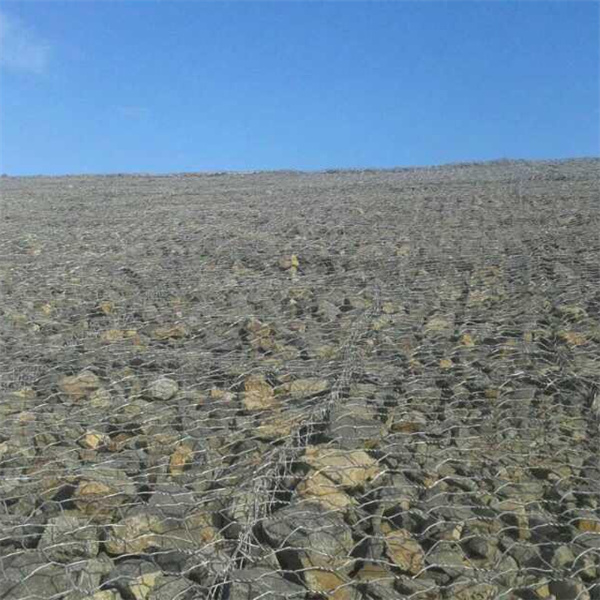Dec . 23, 2024 22:15 Back to list
Top Manufacturers of Stone Cage Nets for Landscaping and Erosion Control Solutions
The Evolution of Stone Cage Net Manufacturers A Comprehensive Overview
In recent years, the construction and landscaping industries have witnessed a surge in the utilization of stone cage nets, often referred to as gabion baskets. These structures, typically made of heavy-duty wire and filled with stones, serve a multitude of purposes, including erosion control, slope stabilization, and aesthetic landscaping. The demand for effective and sustainable solutions in civil engineering has led to a growing number of manufacturers specializing in stone cage nets. This article explores the evolution, manufacturing process, benefits, and future prospects of stone cage net manufacturers.
The Evolution of Stone Cage Nets
The use of stone cages dates back hundreds of years, with early applications in military fortifications and riverbank stabilization. Modern advancements have transformed these traditional structures into sophisticated engineering solutions. With the increasing focus on environmental sustainability, the need for durable, eco-friendly materials has propelled the growth of stone cage net manufacturing.
Manufacturers have adapted to the changing demands of the construction industry by adopting innovative designs and harnessing new technologies. Today's stone cage nets are made from high-quality galvanized steel or PVC-coated wire, ensuring they withstand harsh weather conditions and resist corrosion. The manufacturing process has become more streamlined, allowing for greater customization and efficiency.
The Manufacturing Process
The production of stone cage nets involves several key steps
1. Material Selection Manufacturers begin by choosing the right grade of wire based on the intended application. Galvanized steel is preferred for its durability, while PVC coating adds an extra layer of protection against rust.
2. Wire Forming The selected wire is then shaped into rectangular or hexagonal meshes. Advanced machinery allows for precise dimensions, ensuring consistency in every product.
3. Cage Construction The formed wire is assembled into cages, which are typically designed to hold a specific volume of stone. Quality control is crucial at this stage, as the structural integrity of the cage must meet stringent standards.
4. Testing Before being dispatched, the finished products undergo rigorous testing to ensure they can withstand the expected loads and environmental conditions.
stone cage net manufacturers

5. Delivery and Installation Finally, manufacturers often provide logistical support, ensuring that the stone cage nets are delivered to the site and installed efficiently.
Benefits of Stone Cage Nets
The rise of stone cage net manufacturers has been fueled by the numerous benefits these products offer
- Erosion Control Stone cages effectively prevent soil erosion on slopes and riverbanks, promoting stability and reducing the risk of landslides.
- Eco-Friendliness Utilizing natural stones minimizes environmental impact, and the longevity of these structures reduces the need for frequent replacements.
- Aesthetic Appeal Stone cages can be designed to blend seamlessly with landscapes, creating visually appealing features in parks, gardens, and urban environments.
- Cost-Effectiveness Compared to traditional retaining walls, stone cage nets present a more affordable alternative, especially in large-scale projects.
Future Prospects
Looking ahead, the future of stone cage net manufacturers appears promising. As urbanization continues to rise, the need for effective land management solutions will only increase. Manufacturers are likely to invest in research and development to create even more sustainable, robust products.
Additionally, the integration of emerging technologies such as automated manufacturing processes and enhanced material science will further propel the industry forward. With a growing emphasis on eco-friendly practices, stone cage nets will increasingly become a go-to solution for engineers and architects alike.
In conclusion, stone cage net manufacturers have played a pivotal role in the evolution of modern construction and landscaping practices. As they continue to innovate and adapt to new challenges, the impact of these products on our environment and infrastructure will undeniably be profound. Through their commitment to quality and sustainability, these manufacturers are shaping a resilient future for our landscapes.
-
HESCO Gabion Baskets for Coastal Erosion Prevention
NewsAug.22,2025
-
Longevity and Durability of River Rock Gabion Walls
NewsAug.22,2025
-
How to Integrate Gabion 3D Walls in Urban Planning
NewsAug.22,2025
-
Reno Mattress Gabion Applications in Civil Engineering
NewsAug.22,2025
-
How to Install Wire Mesh for Gabion Baskets Properly
NewsAug.22,2025
-
Best Materials for Filling a Chain Link Gabion
NewsAug.22,2025
-
Wire Mesh Thickness Impact on Gabion Wall Load Bearing
NewsAug.12,2025






